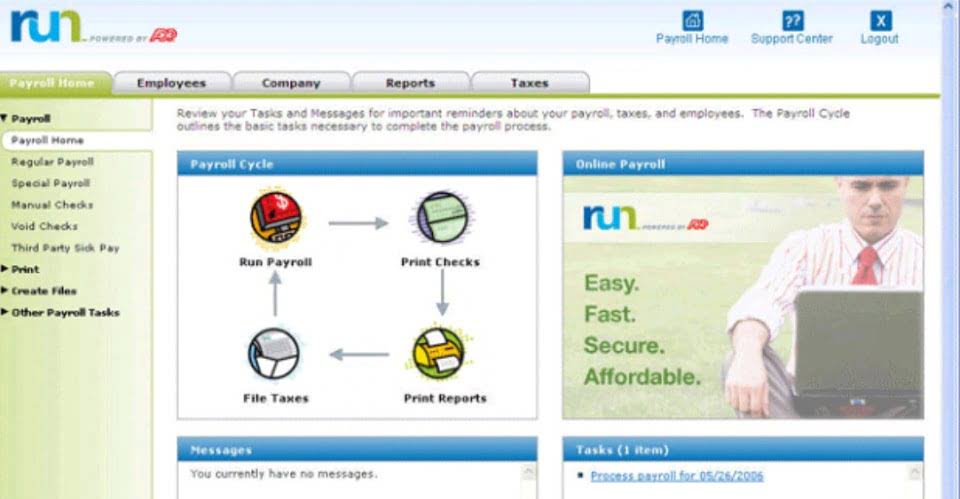Content

There is a lot involved when making the decision to purchase insurance for your business. Cut through the noise and dive deep on a specific topic with one of our curated content hubs. Sage 50cloud Desktop accounting software connected to the cloud.

Less common non-current liabilities consist of things like deferred credits, post-employment benefits, and unamortized investment tax credits . While they may be not be as common as other types, you should not overlook them. Long-term liabilities can be referred to as obligations of the business that are not due within the reporting period, which is usually one year.
Balance Sheet
When a company wants to purchase a building, they typically do not pay cash. Since the mortgage loan is an obligation owed, it’s listed on the balance sheet as a liability.
Liabilities are obligations a person or company owes and are classified as long-term and current. Farther explore the definition of liabilities, the characteristics of liabilities, and examples of liabilities in this lesson. Current represents the mortgage payments that will be paid within a year, while long-term are payments that will be paid after that year, essentially the balance of the loan. For the rest of this lesson, we’ll explore how to account for bonds, pensions, long-term leases, and mortgages. It helps in the calculation of useful financial ratios whose analysis gives meaningful insights about the business.
See below for the balance sheet reporting treatment of the current and long-term liability portions of the Note Payable from initiation to final payment. A lease is a contract in which a lessor grants the lessee the exclusive right to use a specific underlying asset for a period of time in exchange for payments. Leasing provides a contractual arrangement between the company and the lessor that gives the company the right to use the equipment in exchange for periodic payments for a specific period of time. Although the explanation of a pension sounds simple, it’s a complicated process, and there are many important factors to consider when accounting for pensions.
Wonderland Time Token Rose 992% Since Sep, How Far Will It Go?
Below are examples of metrics that management teams and investors look at when performing financial analysisof a company. Simply put, it is the difference in taxes that arises when taxes due in one of the accounting period are either not paid or overpaid. DividendDividends refer to the portion of business earnings paid to the shareholders as gratitude for investing in the company’s equity. The term ‘Liabilities’ in a company’s Balance sheet means a particular amount which a company owes to someone . Or in other words, if a company borrows a certain amount or takes credit for Business Operations, then the company has an obligation to repay it within a stipulated time-frame.
- Any pre-payment or other penalties required to be paid in connection for Indebtedness to be repaid in full on the Closing Date shall be included in the calculation of Long Term Liabilities for this purpose.
- Nevertheless, bonds must be listed on the balance sheet as a long-term liability.
- Deferred Tax, Other Liabilities on the balance sheet, and Long-term Provision have, however, decreased by 2.4%, 2.23%, and 5.03%, which suggests the operations have improved on a YoY basis.
- Current liabilities, on the other hand, need to be paid back within the operating cycle.
- These truck payments are noted on the balance sheet as truck loans.
- A liability is something a person or company owes, usually a sum of money.
This jogs Jan’s memory, and she starts preparing for the seminar. Long-Term Liabilitiesmeans all Indebtedness and other long term liabilities of the Company or any of its subsidiaries on a consolidated basis determined in accordance with GAAP .
More Definitions Of Long
However, if the bond purchase price is $150,000 but the principal amount to be repaid is $135,000, the investor purchased the bond at a premium. In sum, premium means purchasing the bond at a greater value than the principal. Why would an investor purchase a bond for less than it’s worth? Sometimes these payments can total more than the loss of principal once the bond matures and can result in a substantial net profit for the investor. Long-term liabilities are also known as noncurrent liabilities.
Later in the season, Bill needs extra funding to purchase the next season’s inventory. Working capital management is a strategy that requires monitoring a company’s current assets and liabilities to ensure its efficient operation. Current liabilities are expected to be paid back within one year, and long-term liabilities are expected to be paid back in over one year. It’s important for companies to keep track of all liabilities, even the short-term ones, so they can accurately determine how to pay them back. On a balance sheet, these two categories are listed separately but added together under “total liabilities” at the bottom. In this guide we’ll walk you through the financial statements every small business owner should understand and explain the accounting formulas you should know.
Which item is not a current liability?
A non-current liability refers to the financial obligations of a company that are not expected to be settled within one year. Examples of non-current liabilities include long-term leases, bonds payable, and deferred tax liabilities.
Below is a screenshot of CFI’s example on how to model long term debt on a balance sheet. As you can see in the example below, if a company takes out a bank loan of $500,000 that equally amortizes over 5 years, you can see how the company would report the debt on its balance sheet over the 5 years. Purchase of assets, new branches, etc. can be funded from Equity or Debt.
Learn The Basics Of Accounting For Free
Therefore, an account due within eighteen months would be listed before an account due within twenty-four months. A non-current liability (long-term liability) broadly represents a probable sacrifice of economic benefits in periods generally greater than one year in the future. This reading focuses on bonds payable, leases, and pension liabilities. Long‐term liabilities are existing obligations or debts due after one year or operating cycle, whichever is longer.
I swear. The definitions for long-term liabilities/non-current liabilities and others are much more complicated than it seems.
— Shawn Phang (@hueshonhue) November 19, 2012
What makes a bond attractive to the investor is that they receive periodic payments until the full amount is paid back. A liability may consist of some portion that is to be paid within a period of twelve months and another portion that is to be paid after a period of twelve months. The portion that falls due for payment within a period of twelve months is classified as a current liability and the portion that falls due after a period of twelve months is classified as a long-term liability. Thus, long-term liability is the liability that has to be settled after twelve months. However, if the operating cycle of the entity is more than twelve months then such a longer period of operating cycle shall be considered instead of twelve months. IAS 1 Presentation of Financial Statements provides a more technical definition of long-term liabilities.
Bonds
To define liabilities, a company must account for all debts, current, and long-term, as well as monies received in advance in exchange for future transactions. A promissory note, the long term notes payable are agreements between a borrower and a lender. Here the borrower promises to pay back the amount with interest over a predetermined period. Long term notes payables are due for payment after one year from borrowing. Repayment liability on notes payable creates a charge on the firm’s liquidity.

Another example of off-balance-sheet financing is an operating lease, which are typically entered into in order to use equipment on a short-term basis relative to the overall useful life of the asset. An operating lease does not transfer any of the rewards or risks of ownership, and as a result are not reported on the balance sheet of the lessee.
Vesting requires a certain number of service years before the employee is entitled to pension benefits. Those vested benefits are listed on the balance sheet as a long-term liability. Long-term liabilities are obligations owed by a company for more than a year. Examples of long-term liabilities are bonds, pensions, long-term leases, and mortgages.
Another, loftier goal of Jim’s Trucking is to own 10 big rigs and start delivering inventory for one of the largest grocery store chains in the Midwest. However, the owner believes it may take 5 to 7 years to achieve this goal.
In addition, a liability that is coming due but has a corresponding long-term investment intended to be used as payment for the debt is reported as a long-term liability. The long-term investment must have sufficient funds to cover the debt. Wages, expenses such as electricity and water, payroll taxes and short term leases are all considered short term liabilities on their balance sheets. Long term liabilities do not require interest payments during the current year. Some of these include leases, deferred expenses and employee benefits that are payable in the future.

Show bioTammy teaches business courses at the post-secondary and secondary level and has a master’s of business administration in finance. Molly has to repay the government loan received to start her business. Molly obtained a loan from the bank specifically to help finance the purchase of her retail store. For example, if the bond’s purchase price is $100,000 but the principal amount to be repaid is $125,000, then the investor purchased the bond at a discount. Tammy teaches business courses at the post-secondary and secondary level and has a master’s of business administration in finance. They are to paid by the company in the future even if after a period of one year.
A deferred tax liability occurs when the tax payment liability is accumulated in the current accounting period but is due only in the later accounting cycle. Such liability arises when the approaches followed by business differ from that of the government agencies responsible for tax collection. It should be noted that the recording of deferred tax liabilities is recorded only when the event’s happening is certain; else it may only be recorded as a footnote. Operating lease lessees reporting under US GAAP recognize a lease liability and corresponding right-of-use asset on the balance sheet, equal to the present value of lease payments. The liability is subsequently reduced using the effective interest method, but the amortization of the right-of-use asset is the lease payment less the interest expense.
- Analyzing long-term liabilities often includes an assessment of how creditworthy a borrower is, i.e. their ability and willingness to pay their debt.
- The principal amount on loan due after twelve months is recorded as a long term liability on the liabilities side of the balance sheet.
- In evaluating solvency, leverage ratios focus on the balance sheet and measure the amount of debt financing relative to equity financing.
- An issuer amortises any issuance discount or premium on bonds over the life of the bonds.
- They are obliged to get the money until the company is declared as insolvent.
- Expenses explain the cost of operation, while liabilities are any obligations the business owes to another party after receiving goods or services.
Balance SheetA balance sheet is one of the financial statements of a company that presents the shareholders’ equity, liabilities, and assets of the company at a specific point in time. It is based on the accounting equation that states that the sum of the total liabilities and the owner’s capital equals the total assets of the company. The long-term portion of a bond payable is reported as a long-term liability.
The Finnish Financial Supervisory Authority has approved the merger and listing prospectus prepared for the merger of Virala Acquisition Company and Purmo Group – marketscreener.com
The Finnish Financial Supervisory Authority has approved the merger and listing prospectus prepared for the merger of Virala Acquisition Company and Purmo Group.
Posted: Tue, 30 Nov 2021 07:36:06 GMT [source]
Long-term ones typically consist of things like loans, bonds, rent, mortgage, taxes, payroll, and any employee pensions offered by the company. Current liabilities are debts and interest amounts owed and payable within the next 12 months. Any principal balances due beyond 12 months are recorded as long-term liabilities. Together, current and long-term liability makes up the “total liabilities” section. Current accounts usually include credit accounts your business maintains for inventory and supplies. The long-term debt is most often tied to major purchases used over time to operate the business.
Is long-term debt a non current liability?
Long Term Debt is classified as a non-current liability on the balance sheet, which simply means it is due in more than 12 months’ time.
Bondholders are not bothered with the profitability of the company. They are obliged to get the money until the company is declared as insolvent.
On the balance sheet, we would total the amount due for a year and label it as salaries payable. Therefore, sales tax they’ve collected from customers must be sent to the state taxing agency and long term liabilities definition federal tax they may not have yet paid to the federal government should also be listed. Bonds can also be purchased at a premium, purchasing the bond at a greater value than the principal.
Author: Jody Linick
